-
 Bitcoin
Bitcoin $85,464.9896
2.96% -
 Ethereum
Ethereum $1,627.2982
4.80% -
 Tether USDt
Tether USDt $0.9996
0.01% -
 XRP
XRP $2.1481
6.82% -
 BNB
BNB $595.1416
1.80% -
 Solana
Solana $132.7780
10.67% -
 USDC
USDC $0.9999
0.01% -
 Dogecoin
Dogecoin $0.1662
4.97% -
 TRON
TRON $0.2476
1.70% -
 Cardano
Cardano $0.6493
4.75% -
 UNUS SED LEO
UNUS SED LEO $9.3607
0.27% -
 Chainlink
Chainlink $13.0646
4.30% -
 Avalanche
Avalanche $20.3048
7.40% -
 Sui
Sui $2.3799
10.13% -
 Stellar
Stellar $0.2439
4.18% -
 Hedera
Hedera $0.1747
5.28% -
 Shiba Inu
Shiba Inu $0.0...01245
3.37% -
 Toncoin
Toncoin $2.9178
3.21% -
 Bitcoin Cash
Bitcoin Cash $338.9546
8.79% -
 MANTRA
MANTRA $6.2830
-2.04% -
 Litecoin
Litecoin $78.1950
3.91% -
 Polkadot
Polkadot $3.6828
3.90% -
 Hyperliquid
Hyperliquid $16.2355
5.28% -
 Dai
Dai $1.0001
0.02% -
 Bitget Token
Bitget Token $4.4059
2.39% -
 Pi
Pi $0.7500
14.62% -
 Ethena USDe
Ethena USDe $0.9991
0.03% -
 Monero
Monero $211.6877
1.49% -
 Uniswap
Uniswap $5.4313
5.25% -
 OKB
OKB $54.4271
2.85%
What is AMM (automated market maker)? How is Uniswap priced?
Uniswap uses the constant product formula to price assets, adjusting token quantities in pools to maintain a constant product, impacting prices based on trade size and pool liquidity.
Apr 11, 2025 at 06:57 pm
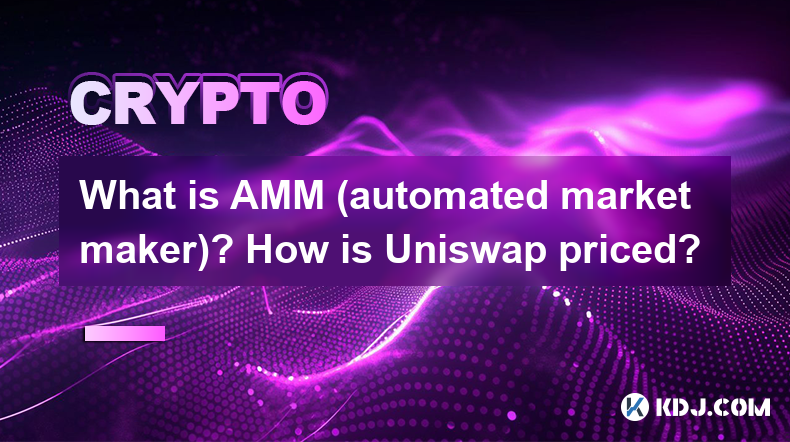
What is AMM (Automated Market Maker)? How is Uniswap Priced?
Automated Market Makers (AMMs) are a type of decentralized exchange protocol that use algorithms to price assets instead of traditional order books. The most well-known AMM is Uniswap, which has become a cornerstone of the decentralized finance (DeFi) ecosystem. This article will delve into the mechanics of AMMs and specifically how Uniswap prices its assets.
Understanding AMMs
AMMs operate on the principle of liquidity pools, which are pools of tokens locked in a smart contract. Users can swap tokens within these pools, and the price of the tokens is determined by an algorithm rather than by a centralized entity. The most common algorithm used in AMMs is the constant product formula, which is expressed as x y = k, where x and y represent the quantities of the two tokens in the pool, and k is a constant.
The Constant Product Formula
The constant product formula ensures that the product of the quantities of the two tokens in the pool remains constant after each trade. When a user swaps one token for another, the smart contract adjusts the quantities of the tokens in the pool to maintain the constant k. This adjustment results in a change in the price of the tokens.
For example, if a user wants to swap Token A for Token B, they will deposit Token A into the pool, which increases the quantity of Token A and decreases the quantity of Token B to keep k constant. The new price of Token B in terms of Token A is then determined by the new ratio of the quantities of the two tokens in the pool.
Liquidity Provision in AMMs
Liquidity providers are users who deposit their tokens into the liquidity pools. In return, they receive liquidity provider (LP) tokens, which represent their share of the pool. These LP tokens can be redeemed for the underlying tokens at any time, and liquidity providers earn a portion of the trading fees generated by the pool.
The more liquidity a pool has, the smaller the price impact of trades, making the pool more attractive to traders. However, providing liquidity also comes with risks, such as impermanent loss, which occurs when the price of the tokens in the pool changes significantly.
Uniswap's Pricing Mechanism
Uniswap uses the constant product formula to determine the price of tokens in its pools. When a user wants to swap tokens on Uniswap, they interact with the smart contract, which calculates the new price based on the quantities of the tokens in the pool.
To illustrate how Uniswap prices its assets, consider a pool with two tokens, Token A and Token B. If the pool initially contains 100 Token A and 100 Token B, the constant k is 100 100 = 10,000. If a user wants to swap 10 Token A for Token B, the new quantities in the pool will be 110 Token A and y Token B, where 110 * y = 10,000. Solving for y, we get y = 10,000 / 110 ≈ 90.91 Token B.
The new price of Token B in terms of Token A is then 110 / 90.91 ≈ 1.21. This means that the user will receive approximately 9.09 Token B for their 10 Token A, and the price of Token B has increased relative to Token A.
Slippage and Price Impact
Slippage refers to the difference between the expected price of a trade and the actual price at which the trade is executed. In AMMs like Uniswap, slippage is influenced by the size of the trade relative to the liquidity of the pool. Larger trades in less liquid pools will result in higher slippage.
To mitigate slippage, users can set a slippage tolerance when executing trades on Uniswap. If the actual price of the trade exceeds the slippage tolerance, the transaction will be rejected. This feature allows users to control the maximum price impact they are willing to accept.
Trading Fees and Liquidity Incentives
Trading fees on Uniswap are typically set at 0.3% of the trade value. These fees are distributed to liquidity providers proportional to their share of the pool. The fees serve as an incentive for users to provide liquidity, as they can earn passive income from the trading activity in the pool.
In addition to trading fees, some AMMs, including Uniswap, have introduced liquidity mining programs. These programs reward liquidity providers with additional tokens, further incentivizing them to contribute to the liquidity of the pools.
Frequently Asked Questions
Q: How does Uniswap handle large trades that could significantly impact the pool's price?
A: Uniswap allows users to set a slippage tolerance to manage the price impact of large trades. If the trade's price impact exceeds the set slippage tolerance, the transaction will be rejected, protecting users from excessive price slippage.
Q: Can I provide liquidity to multiple pools on Uniswap?
A: Yes, users can provide liquidity to multiple pools on Uniswap. Each pool will have its own LP tokens, and the liquidity provider's rewards will be calculated separately for each pool based on the trading fees generated.
Q: What happens to the liquidity in a pool if one of the tokens becomes worthless?
A: If one of the tokens in a pool becomes worthless, the value of the pool will be significantly impacted. Liquidity providers may experience impermanent loss, and the pool's overall value will decrease. However, they can still redeem their LP tokens for the remaining tokens in the pool.
Q: How does Uniswap ensure the security of its smart contracts?
A: Uniswap's smart contracts are audited by reputable third-party firms to ensure their security. Additionally, the code is open-source, allowing the community to review and identify potential vulnerabilities. Any discovered issues are addressed through updates to the smart contracts.
Disclaimer:info@kdj.com
The information provided is not trading advice. kdj.com does not assume any responsibility for any investments made based on the information provided in this article. Cryptocurrencies are highly volatile and it is highly recommended that you invest with caution after thorough research!
If you believe that the content used on this website infringes your copyright, please contact us immediately (info@kdj.com) and we will delete it promptly.
- Seventy Chains and Counting: Bitcoin Staking Expands With Mainnet Launch and New Integration
- 2025-04-13 12:10:15
- Remittix (RTX) Price Prediction Shows Hopes That DOGE Price May Yet Recover
- 2025-04-13 12:10:15
- WOODZ Rumored to Have Dated the Late Actress Kim Sae Ron Prior to Her DUI Incident
- 2025-04-13 12:10:13
- The SafeMoon (SFM) project has gradually signaled bullish momentum
- 2025-04-13 12:10:13
- ArbitrageScanner – The Loudest Crypto Event of the Year
- 2025-04-13 12:00:12
- Four-day Spiritual Retreat at St Lawrence Church and Shrine Concludes
- 2025-04-13 12:00:12
Related knowledge
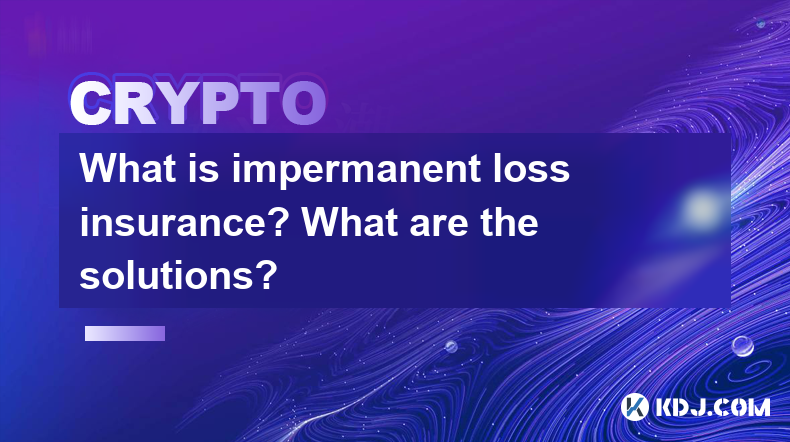
What is impermanent loss insurance? What are the solutions?
Apr 12,2025 at 01:14am
What is Impermanent Loss Insurance? What are the Solutions? Impermanent loss is a significant concern for liquidity providers in decentralized finance (DeFi) platforms. It occurs when the price of tokens in a liquidity pool changes compared to when they were deposited, leading to a potential loss if the provider decides to withdraw their liquidity. To m...
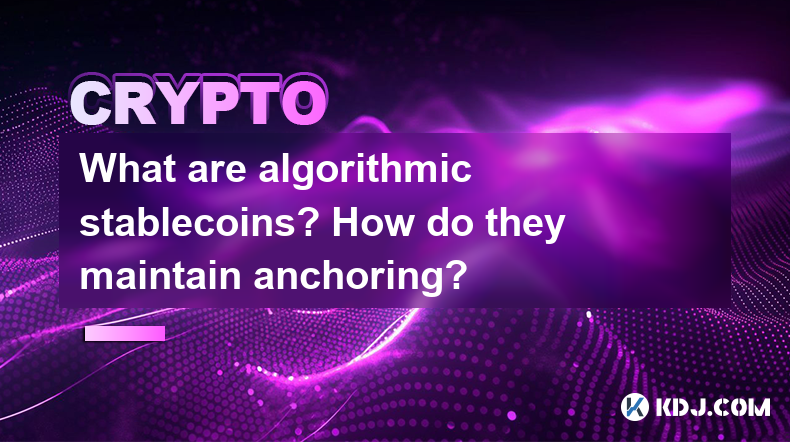
What are algorithmic stablecoins? How do they maintain anchoring?
Apr 12,2025 at 11:35am
Algorithmic stablecoins represent a fascinating and innovative segment within the cryptocurrency ecosystem. These digital assets are designed to maintain a stable value, typically pegged to a fiat currency like the US dollar, through the use of algorithms rather than traditional collateral. This approach distinguishes them from other types of stablecoin...
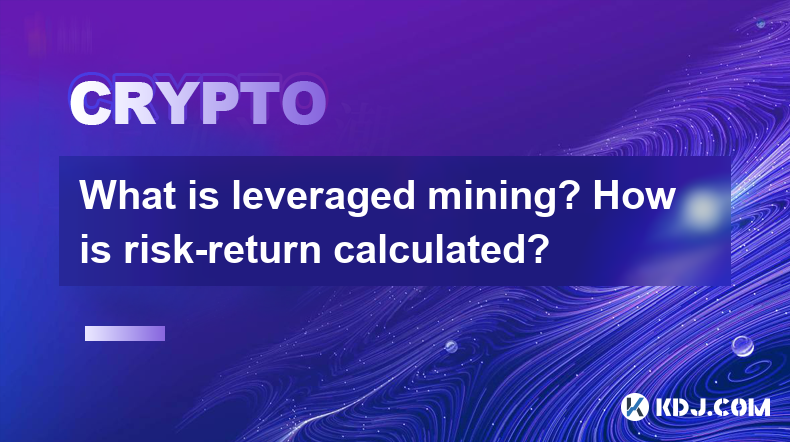
What is leveraged mining? How is risk-return calculated?
Apr 11,2025 at 04:07pm
What is Leveraged Mining? How is Risk-Return Calculated? Leveraged mining is a strategy used in the cryptocurrency space where miners borrow funds to increase their mining capacity and potential returns. This approach can amplify both profits and losses, making it a high-risk, high-reward endeavor. Understanding how to calculate the risk and return asso...
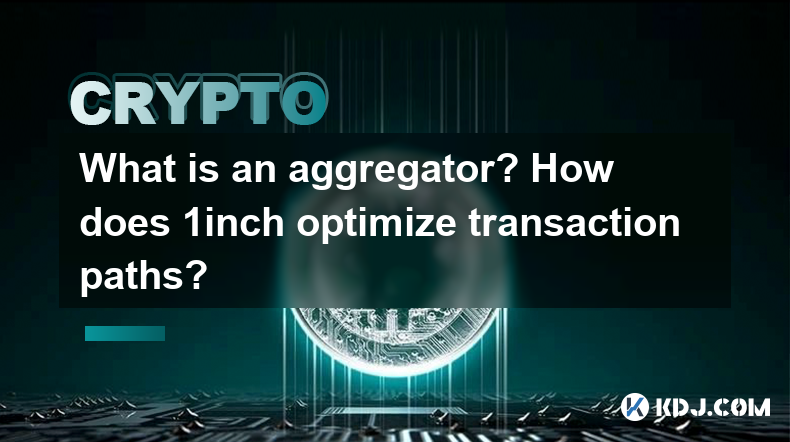
What is an aggregator? How does 1inch optimize transaction paths?
Apr 12,2025 at 05:00pm
An aggregator in the cryptocurrency space is a tool that compiles and compares data from multiple decentralized exchanges (DEXs) to find the best possible trading routes and prices for users. Aggregators are essential for traders looking to optimize their transactions, as they can automatically search through various liquidity sources to ensure the most...
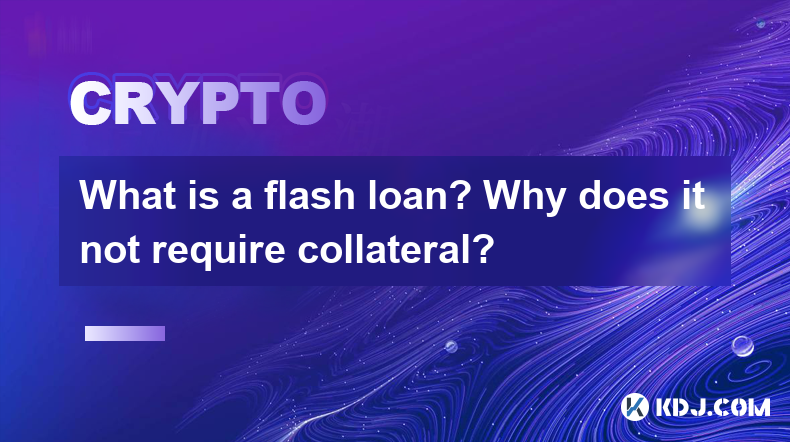
What is a flash loan? Why does it not require collateral?
Apr 11,2025 at 12:57pm
A flash loan is a type of loan that is unique to the decentralized finance (DeFi) ecosystem. It allows borrowers to take out a loan without the need for collateral, and the loan must be repaid within the same transaction. This type of loan is facilitated by smart contracts on blockchain platforms, most commonly on the Ethereum network. The concept of a ...

What is AMM (automated market maker)? How is Uniswap priced?
Apr 11,2025 at 06:57pm
What is AMM (Automated Market Maker)? How is Uniswap Priced? Automated Market Makers (AMMs) are a type of decentralized exchange protocol that use algorithms to price assets instead of traditional order books. The most well-known AMM is Uniswap, which has become a cornerstone of the decentralized finance (DeFi) ecosystem. This article will delve into th...

What is impermanent loss insurance? What are the solutions?
Apr 12,2025 at 01:14am
What is Impermanent Loss Insurance? What are the Solutions? Impermanent loss is a significant concern for liquidity providers in decentralized finance (DeFi) platforms. It occurs when the price of tokens in a liquidity pool changes compared to when they were deposited, leading to a potential loss if the provider decides to withdraw their liquidity. To m...

What are algorithmic stablecoins? How do they maintain anchoring?
Apr 12,2025 at 11:35am
Algorithmic stablecoins represent a fascinating and innovative segment within the cryptocurrency ecosystem. These digital assets are designed to maintain a stable value, typically pegged to a fiat currency like the US dollar, through the use of algorithms rather than traditional collateral. This approach distinguishes them from other types of stablecoin...

What is leveraged mining? How is risk-return calculated?
Apr 11,2025 at 04:07pm
What is Leveraged Mining? How is Risk-Return Calculated? Leveraged mining is a strategy used in the cryptocurrency space where miners borrow funds to increase their mining capacity and potential returns. This approach can amplify both profits and losses, making it a high-risk, high-reward endeavor. Understanding how to calculate the risk and return asso...

What is an aggregator? How does 1inch optimize transaction paths?
Apr 12,2025 at 05:00pm
An aggregator in the cryptocurrency space is a tool that compiles and compares data from multiple decentralized exchanges (DEXs) to find the best possible trading routes and prices for users. Aggregators are essential for traders looking to optimize their transactions, as they can automatically search through various liquidity sources to ensure the most...

What is a flash loan? Why does it not require collateral?
Apr 11,2025 at 12:57pm
A flash loan is a type of loan that is unique to the decentralized finance (DeFi) ecosystem. It allows borrowers to take out a loan without the need for collateral, and the loan must be repaid within the same transaction. This type of loan is facilitated by smart contracts on blockchain platforms, most commonly on the Ethereum network. The concept of a ...

What is AMM (automated market maker)? How is Uniswap priced?
Apr 11,2025 at 06:57pm
What is AMM (Automated Market Maker)? How is Uniswap Priced? Automated Market Makers (AMMs) are a type of decentralized exchange protocol that use algorithms to price assets instead of traditional order books. The most well-known AMM is Uniswap, which has become a cornerstone of the decentralized finance (DeFi) ecosystem. This article will delve into th...
See all articles























































































